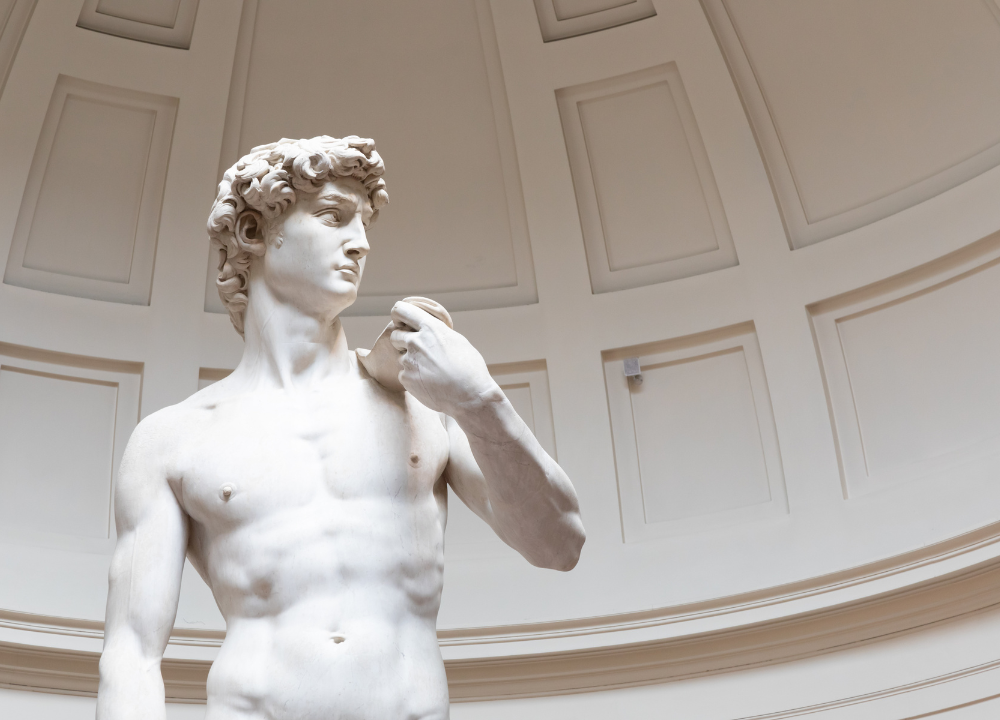Have you ever stood in front of a painting and felt an overwhelming rush of emotion? That’s exactly what happens when you gaze at J.M.W.
Turner’s masterpiece, “The Fighting Temeraire. ” This stunning artwork captures the end of an era, showcasing a majestic ship being towed to its final resting place. But there’s so much more to this painting than meets the eye. You will discover the rich history behind “The Fighting Temeraire,” explore its significance in the art world, and understand why it continues to resonate with viewers today.
You’ll learn about Turner’s unique techniques and how they evoke feelings of nostalgia and loss. By the end, you’ll see this iconic piece in a whole new light, deepening your appreciation for Turner’s genius. Don’t miss out on uncovering the layers of meaning in this remarkable work of art. Let’s dive in!
Historical Context
The Fighting Temeraire, painted by J.M.W. Turner in 1839, stands as a powerful symbol of change. This artwork captures the end of an era. It shows the last journey of a proud warship, the HMS Temeraire. Turner’s painting reflects the historical changes happening in Britain during the Industrial Revolution. Understanding the historical context of this artwork reveals its deeper meaning and significance.
Industrial Revolution
The Industrial Revolution transformed Britain in many ways. Factories sprang up. Cities grew. People moved from farms to cities for work.
- New technologies changed transportation.
- Steam engines powered trains and ships.
- Trade and commerce flourished.
These changes affected society, culture, and art. Turner witnessed this rapid change. He captured the tension between tradition and modernity in his painting.
The Hms Temeraire
The HMS Temeraire was a famous ship. It fought in the Battle of Trafalgar in 1805. This battle was crucial for British naval history. The ship was known for its strength and bravery.
By the time of Turner’s painting, the Temeraire was old. It was being towed to be dismantled. This act symbolized the end of an important chapter in British naval history.
Turner’s Artistic Vision
Turner used light and color to express emotion. He painted the sunset behind the ship. This choice represents the end of an era. The tugboat symbolizes progress and the future.
Turner’s style was unique. He blended realism with impressionism. His work invites viewers to reflect on change.
National Pride And Nostalgia
The Fighting Temeraire evokes feelings of national pride. It reminds viewers of Britain’s naval power. At the same time, it stirs nostalgia for the past.
Turner’s painting captures both glory and loss. This duality resonates with many people. It reflects the complexities of change in society.
Artist Background
The Fighting Temeraire is a famous painting by J.M.W. Turner. It shows the last journey of a once-great ship. This artwork holds deep meaning and reflects Turner’s views on change and progress. Understanding the artist’s background helps us appreciate this masterpiece even more.
Early Life
Turner was born in 1775 in London. He grew up in a working-class family. His father was a barber and his mother was a housemaid. From a young age, Turner loved to draw. He often sketched local scenes and nature. This passion led him to become an artist.
Art Education
At the age of 14, Turner entered the Royal Academy Schools. He learned various techniques and styles. His teachers recognized his talent early on. They encouraged him to explore landscapes and seascapes. This education shaped his future works.
Career Highlights
- Turner became a full member of the Royal Academy in 1802.
- He gained fame for his expressive use of light and color.
- His paintings often showed the effects of weather on landscapes.
- Turner traveled extensively, influencing his art.
- He painted over 550 works during his lifetime.
Personal Life
Turner had a complex personal life. He never married, but he had a long relationship with a woman named Sarah Danby. They had two daughters together. He also had a close relationship with his father, who supported his art career.
Artistic Influence
Turner was influenced by other artists. He admired the works of Claude Monet and John Constable. Their styles inspired him to experiment with color and light. Turner also focused on themes of nature, industry, and progress.
Painting Description
The Fighting Temeraire, painted by J.M.W. Turner in 1839, is a stunning piece of art. This painting captures the last journey of a legendary warship, the HMS Temeraire. Turner uses vibrant colors and dramatic scenes to evoke deep feelings. The artwork reflects themes of change, nostalgia, and the passage of time. It portrays the end of an era, as the ship is towed away for dismantling. This work stands as a testament to both the ship’s glory and the industrial advancements of the time.
Color Palette
Turner’s color palette in The Fighting Temeraire is both striking and meaningful. The painting features a blend of warm and cool colors, creating a dynamic atmosphere. The sky is painted in shades of orange, yellow, and red, suggesting a beautiful sunset. These colors symbolize change and the end of a day. The ship’s dark hull contrasts sharply with the vibrant sky.
- Warm Colors: Orange, yellow, red
- Cool Colors: Blue, gray
- Contrasts: Dark ship against a bright sky
This palette evokes emotions of nostalgia and reflection. The warm tones draw viewers in, while the cool colors ground the piece. The interplay of colors enhances the overall mood. Here is a simple table summarizing the main colors:
| Color Type | Colors Used |
|---|---|
| Warm Colors | Orange, Yellow, Red |
| Cool Colors | Blue, Gray |
Composition Elements
The composition of The Fighting Temeraire is skillfully arranged. The painting features a horizontal layout that draws the eye across the canvas. The ship occupies a prominent position, symbolizing its importance. The horizon line is low, allowing the sky to dominate the scene.
Key elements in the composition include:
- The Ship: Central focus, representing the end of an era.
- The Tugboat: Smaller, yet significant, showing the push towards modernization.
- The Sky: Expansive and colorful, adding depth and emotion.
This arrangement creates a sense of movement. The tugboat pulls the Temeraire, suggesting progress and change. The viewer’s eye travels from the ship to the horizon, enhancing the feeling of farewell. This composition reflects Turner’s mastery in creating a narrative through visual elements.
Symbolism
The Fighting Temeraire is rich in symbolism. The painting represents the transition from the old to the new. The ship symbolizes the past, while the tugboat indicates industrial change. This contrast highlights the end of the age of sail and the rise of steam power.
- The Ship: A symbol of glory and history.
- The Tugboat: Represents progress and modernization.
- The Sunset: Signifies the end of an era.
Turner uses these symbols to provoke thoughts about change. The ship’s journey reflects the inevitable passage of time. The warm colors of the sunset evoke feelings of nostalgia. This painting invites viewers to reflect on their own experiences with change.
Cultural Significance
The Fighting Temeraire by J.M.W. Turner holds great cultural significance. This painting captures a moment in British history. It shows the last voyage of a famous ship. Turner’s work reflects the changes in society and art during the 19th century. The painting symbolizes the end of an era, marking the transition from old sailing ships to steam-powered vessels. This shift represents broader changes in technology and culture.
Impact On Art
The Fighting Temeraire changed the way artists viewed their work. Turner’s use of light and color was groundbreaking. He moved away from traditional techniques. His style influenced many artists after him.
Key impacts include:
- Use of Light: Turner used light to convey emotion.
- Color Techniques: He blended colors to create depth.
- Symbolism: The ship symbolizes the past and progress.
Turner’s painting is not just about a ship. It represents a transition in art itself. The table below summarizes Turner’s impact:
| Aspect | Description |
|---|---|
| Emotional Expression | Light and color evoke feelings. |
| Innovation | Shift from realism to impressionistic style. |
| Legacy | Inspired future generations of artists. |
Turner’s work encouraged artists to explore new techniques. This opened doors to modern art movements.
Public Reception
The Fighting Temeraire received mixed reactions upon its unveiling in 1839. Many praised its beauty and emotional depth. Others struggled to understand its symbolism.
Public reception highlights include:
- Critical Acclaim: Critics admired Turner’s mastery of light.
- Public Interest: The painting drew crowds to exhibitions.
- Controversy: Some traditionalists disapproved of the new style.
Turner’s painting became a national treasure over time. It resonates with viewers today. The following table shows key public reactions:
| Year | Reaction |
|---|---|
| 1839 | Mixed reviews from critics. |
| 1850s | Gained popularity among the public. |
| 20th Century | Regarded as a masterpiece. |
Today, The Fighting Temeraire is celebrated worldwide. It represents both artistic innovation and historical reflection.
Artistic Techniques
The Fighting Temeraire, painted by J.M.W. Turner, is a beautiful work of art. It shows a historic ship, the HMS Temeraire, being towed to its final resting place. This painting stands out for its unique artistic techniques. Turner uses brushwork, lighting effects, and perspective to create a powerful image. Each technique adds depth and emotion, telling a story of change and loss.
Brushwork
Turner’s brushwork in The Fighting Temeraire is both expressive and skilled. He uses various techniques to create texture and movement in the painting. The visible brushstrokes add life to the scene.
- Loose strokes: Turner uses loose brushstrokes in the sky. This gives it a dynamic look, mimicking the clouds.
- Thick paint: He applies thick paint to the ship. This makes it stand out against the background.
- Blending: Turner blends colors smoothly. This technique creates a soft transition between light and dark areas.
Below is a table summarizing the brushwork techniques:
| Technique | Description |
|---|---|
| Loose strokes | Creates movement in the sky. |
| Thick paint | Highlights the ship’s importance. |
| Blending | Smooth transitions in colors. |
Overall, Turner’s brushwork adds a sense of drama to the painting. It shows his mastery of the medium. This technique draws viewers into the scene.
Lighting Effects
Lighting is a crucial aspect of The Fighting Temeraire. Turner skillfully uses light to convey mood and emotion. The contrast between light and dark creates a powerful visual impact.
- Warm colors: The sunset features warm colors like orange and yellow. This creates a feeling of nostalgia.
- Cool colors: The water has cool tones, such as blue and green. This contrasts with the warm sky.
- Highlights: Turner adds highlights to the ship. This draws attention to its majestic presence.
Turner’s use of light enhances the narrative:
- The warm sunset symbolizes the end of an era.
- The cool water represents the unknown future.
- Highlights on the ship showcase its historical significance.
This thoughtful use of lighting effects evokes deep emotions. It invites viewers to reflect on the themes of change and loss in the painting.
Perspective
Turner’s perspective in The Fighting Temeraire is striking. He uses it to guide the viewer’s eye and create depth. The composition draws attention to the ship while placing it within a larger context.
- Foreground: The ship is in the foreground, making it the focal point.
- Background: The sunset and tugboat are in the background. They create a sense of distance.
- Diagonal lines: The angle of the ship creates dynamic movement. This adds excitement to the scene.
Turner’s perspective creates a narrative:
- The ship’s position shows its journey’s end.
- The tugboat illustrates the transition to modernity.
- The vast sky emphasizes the ship’s isolation.
This clever use of perspective enhances the emotional weight of the painting. It makes viewers feel a connection to the themes of nostalgia and change.
Themes Explored
The Fighting Temeraire, painted by J.M.W. Turner, captures powerful themes that resonate deeply. This artwork represents more than just a ship; it reflects the changes in society and technology during Turner’s time. The themes explored in this painting include change and transition, nostalgia, and the impact of the Industrial Revolution. Each theme tells a story, highlighting the complex emotions tied to progress and loss.
Change And Transition
The theme of change and transition is central to The Fighting Temeraire. The painting shows the last journey of a once-mighty ship, symbolizing the end of an era. The old ship is being towed by a steam-powered tugboat. This contrast emphasizes the shift from sail to steam power. It marks a significant change in maritime history.
Key points about change and transition in the painting:
- The ship’s fading glory represents the end of traditional sailing.
- The tugboat symbolizes new technology and progress.
- The setting sun evokes feelings of closure and farewell.
This transition can also reflect broader changes in society. The world was evolving. New ideas and innovations were emerging. Turner captures this moment of historical significance in a poignant way.
Nostalgia
Nostalgia is a strong theme in The Fighting Temeraire. The painting evokes a sense of longing for the past. Viewers can feel the weight of history in the image of the old ship. It reminds us of a time when sailing ships ruled the seas.
Consider these nostalgic elements:
- The majestic appearance of the Temeraire, a once-great ship.
- The calm water and soft colors create a peaceful atmosphere.
- Turner’s use of light symbolizes memories fading away.
This nostalgia serves as a reminder of what was lost. The painting encourages viewers to reflect on their own past. It invites them to appreciate the beauty and significance of history.
Industrial Revolution
The Industrial Revolution plays a crucial role in the themes of The Fighting Temeraire. This period marked major advancements in technology and industry. Turner captures the tension between the old and the new. The painting shows the shift from traditional sailing ships to steam-powered vessels.
Impact of the Industrial Revolution in the painting:
- Steam power represents innovation and efficiency.
- Traditional sailing ships symbolize craftsmanship and legacy.
- The tugboat and ship contrast the past with the future.
The Industrial Revolution changed many aspects of life. It influenced transportation, industry, and daily routines. Turner’s work reflects this transformation, highlighting both progress and loss. The artwork serves as a commentary on the impact of modernization on society.




